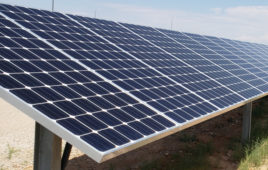HOMER Energy is releasing important updates to its HOMER Grid software, designed to model distributed energy systems that will cut energy costs for commercial and industrial customers. HOMER Energy’s powerful tool for simulating grid-tied solar-plus-storage and other hybrid renewable energy projects now has more powerful ways to estimate the costs of improving reliability and resilience.
HOMER Grid can now more accurately model the economic consequences of grid outages and help users estimate how the timing of random power failures might affect the energy economics of commercial and industrial facilities.
The need for improved electric reliability is one of the key factors driving new commercial investments in distributed energy. Power outages are increasing in the US, due to an aging electric grid and more frequent extreme weather events. They are also costing companies more on an hourly basis according to a 2018 report by the S&C Electric Company. The report says that in 2017, 58% of manufacturing facilities reported an outage of an hour or more, and 18% reported losses of over $100,000 for their worst event. Data center outages, for example, can cost companies up to $9,000 per minute.
“We have been modeling grid-connected systems for well over a decade, and valuing grid-connected storage requires a really rigorous approach,” says HOMER Energy founder and CEO Peter Lilienthal. “We created HOMER Grid as a dedicated product to do this very well.”
Users of HOMER Grid 1.3 can now model any brand of power system components—such as solar photovoltaic cells, generators, batteries, wind turbines and inverters. In addition to its existing and extensive software library, users can edit technical specifications to update existing or create entirely new components. Unlike many energy modeling programs that only work with proprietary components, HOMER Grid has always been agnostic, providing the ability to simulate distributed energy systems with all equipment brands. Users can create and model power systems with the exact brands and specifications they will use in an actual build as they simulate and compare possible grid-connected hybrid renewable energy systems.
The new HOMER Grid incorporates the Genability database of utility rates for North America and also allows users to create complex, custom and international tariffs in a more robust and useful manner. Users can model economic impacts of switching to a new tariff. They can validate past utility tariffs to HOMER Grid’s bill estimate, and calculate income potential from selling excess energy back to the grid. Using electric load data down to minute-long intervals, the new updates will allow for a more accurate simulation of many tariff structures, including net metering and tariffs for selling energy back to the grid.
News item from HOMER Grid





Tell Us What You Think!